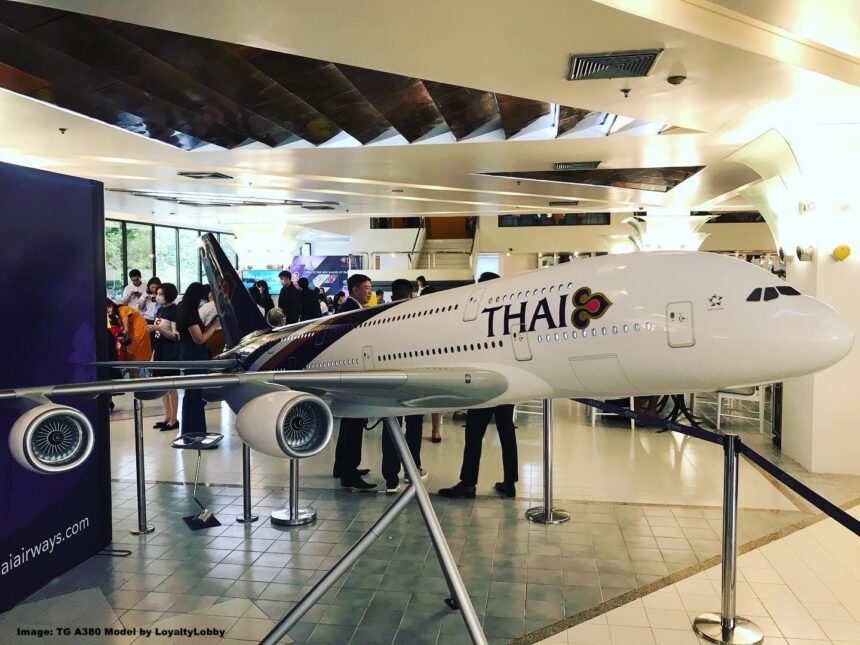There has been a very positive development in the Thai aviation sector as the country has passed its FAA safety evaluation and is back in Category 1, which allows for the filing of new direct/nonstop flights between the U.S. and Thailand.

Many years ago there were direct flights between Bangkok and Los Angeles as well as JFK before that on THAI but these flights were discontinued as TG dropped the route for profitability reasons.
While I don’t see Thai Airways returning its U.S. flights anytime soon, it was already rumored that United Airlines is planning a nonstop flight to Bangkok, and this could now gain traction as the safety evaluation and recertification for Thailand were completed successfully.
As the Bangkok Post reports, the certification will come into effect in February of 2025:
Thailand and the United States are expected to resume direct flights in February of next year when the Federal Aviation Administration (FAA) of the US Department of Transportation upgrades Thai aviation safety from Category 2 to Category 1, according to Deputy Prime Minister and Transport Minister Suriya Jungrungreangkit.
Mr Suriya recently announced the significant progress in Thailand’s aviation safety standards following an inspection by the FAA between Nov 11 and 15, with the Civil Aviation Authority of Thailand (CAAT) receiving favourable evaluations.
He said while some minor issues remain, they are not expected to impact the final decision, adding that Thailand is projected to regain its Category 1 (CAT 1) safety rating by February next year, marking a major milestone for the country’s aviation sector.
Thailand’s downgrade to Category 2 (CAT 2) in December 2015 followed a reassessment by the FAA, citing non-compliance with International Civil Aviation Organization (ICAO) standards.
In 2015, the ICAO found a conflict of interest in that the department is both the regulator and the operator of provincial airports in the country.
It also warned of insufficient personnel inspection and leniency in issuing air transport licences.
Transport Permanent Secretary Chayatan Phromsorn assured that the CAAT has worked diligently to address safety issues and meet the standards since the downgrade. The recent five-day audit by the FAA revealed that major concerns have been resolved, with only minor adjustments pending, he said.
Next, the FAA will finalise its report and conduct a final discussion. It is expected to make an official announcement about the upgrade in late February.
The CAT 1 designation confirms that a country’s civil aviation authority complies with ICAO standards, enabling airlines to establish or expand operations to the US.
Thailand’s regaining of its CAT 1 status will allow Thai airlines to operate direct flights to the US, benefiting the country’s aviation industry. …
Thailand has made significant improvements in airports, immigration controls, and aviation regulation by the CAAT. Screening has also gone up, and there are (apparently) no longer bypass doors.
Is Thailand significantly more unsafe than other countries airports from where flights depart to the U.S. on a daily basis? I’d say no but the FAA disagreed over the last 9 years.
I first wrote about this in the wake of Thailand’s first downgrade to a Cat 2 in the 2014/2015 inspection and subsequent audit failure:
FAA Once Again Downgrades Thailand’s Aviation Sector To Category 2 Following New Safety Concerns
The reasons Thailand lost its Cat 1 certification are multifaceted. For one, there was a military coup shortly before this inspection, and the U.S. government was absolutely not a fan of that. In fact, there were quite a few ugly scenes in front of the U.S. Embassy with radical coup supporters at the time. I’m convinced there was a punitive factor in the decision-making process.
And let’s not forget the crazy case of the Thai Police General, a former Metropolitan Police chief, who was detained by Japanese authorities at Tokyo’s Narita International Airport for having a gun and ammunition in his possession.
The firearm passed through Bangkok Airport on the way to Japan without being detected (or he wasn’t screened in the first place). He said that it was his duty weapon, and he simply forgot it was still in his baggage. This might very well be true and an honest mistake, but it also highlighted severe security lapses at Suvarnabhumi.

The inspectors then found many legitimate reasons for significant problems with Thailand’s aviation sector. The regulatory agency was one of them, and to the government’s credit, it reacted and created the CAAT as a separate entity that (at least in principle) acts independently. Airport security has been approved, and while no security anywhere in the world is 100% perfect (especially not in the U.S. itself, given the annual report about the TSA’s own security errors and missed contraband).
Still, since then, a decade has passed, and we’re finally back to square one so that U.S. airlines can fly back into Thailand and put codeshares on Thai Airways flights.
Conclusion
Thailand has passed an inspection by FAA regulators which ranks countries worldwide in terms of aviation safety and these ratings decide if flights/routes can be established between the two countries and which airlines are allowed to file for new routes.
Thailand lost this rating almost a decade ago, and since then, there have been no direct flights between Thailand and the U.S. Thai Airways used to operate Airbus A340-500 on routes to LAX/JFK but eventually stopped these flights and mothballed the planes, citing their unprofitability.
Is a nonstop flight between the U.S. and Thailand something to look forward to? I flew the Air Canada nonstop between Vancouver and Bangkok once – never again. It was brutal even in Business Class. I rather break it up and stop along the way, either in Korea or Japan.
Let’s see if United follows through and opens a nonstop route from San Francisco or (more likely) Los Angeles as there were some rumors swirling around in early October.






